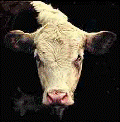Animal Science, Department of

Department of Animal Science: Dissertations, Theses, and Student Research
First Advisor
Paul Kononoff
Date of this Version
12-2021
Document Type
Thesis
Citation
Carroll, A.L. 2021. FEEDING A NEW CORN MILLING COPRODUCT TO LACTATING DAIRY CATTLE; EXAMINATION OF WHOLE ANIMAL ENERGY AND NITROGEN BALANCE.
Abstract
New coproducts are continually developed in the ethanol production industry. With that, the new product originates from the dry milling process which is unlike the traditional process as nitrogenous based particles are concentrated from the residual fiber by sieving post fermentation. Although high protein coproducts have been available since the mid 2000’s. These new products must be evaluated for chemical composition so that they can be accurately described in feed libraries that are used in commercial ration formulation software. While chemical composition provides us an initial and useful description of a feed product, in vivo nitrogen and energy balance studies are needed to examine the utilization and efficiency of converting the nutrients within a given feed product to milk. Therefore, it is integral to analyze both components for accurate and effective ration formulation in the field.
The first experiment analyzed 10 samples of a new high protein coproduct that were obtained from a singular production site over one months period for chemical composition and nutrient availability. Samples were analyzed for DM, CP, Soluble CP, ADICP, NDICP, ADF, aNDF, lignin, EE, sugar, starch, minerals, amino acids, and fatty acids. Also, aNDF was determined for the samples by 3 different commercial fiber systems including refluxing method, bagged sample method, and a confined refluxing and filtering method. For nutrient availability, RUP was determined with in situ and mobile procedures and NDF digestibility at 24, 30, 48, and 240 h. Total tract NDF digestibility was also estimated. Results suggest that the new high protein coproduct contains increased concentration of protein and lysine and reduced fiber when compared to a traditional DDGS.
The second experiment utilized twelve multiparous lactating Jersey cattle in a triplicated 4 × 4 Latin square design. Animals were assigned to 4 different treatments diets with increasing inclusion from 0 % to 8 % of the new high protein coproduct replacing non-enzymatically browned soybean meal. The experiment aims to test the effects of formulation of the new product as well as quantify the whole animal energy and nitrogen balance. Results indicate that increasing inclusion of the new high protein coproduct increased dietary fatty acids. However, it had no effect nutrient digestibility. The utilization of energy for NEL increased with increasing inclusion of the HPCoP with subsequent increases in milk fat production. Results indicate that the new high protein coproduct is able to effectively replace non-enzymatically browned soybean meal in lactating dairy rations.
Advisor: Paul J. Kononoff


Comments
A THESIS Presented to the Faculty of The Graduate College at the University of Nebraska In Partial Fulfillment of Requirements For the Degree of Master of Science, Major: Animal Science, Under the Supervision of Professor Paul J. Kononoff. Lincoln, Nebraska: December, 2021
Copyright © 2021 Addison Lee Carroll